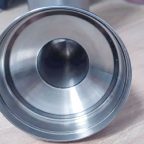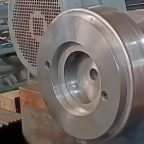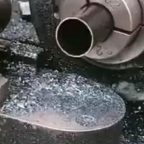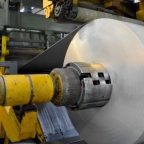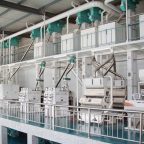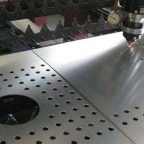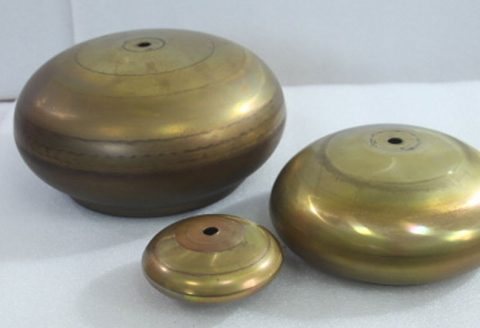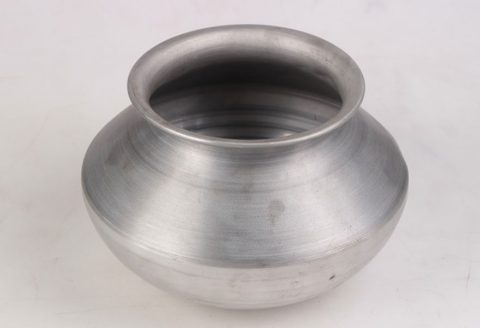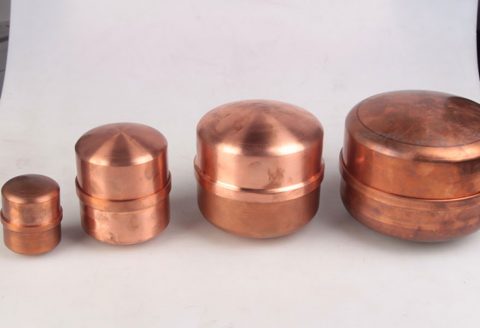
High-strength aluminum alloys, characterized by their excellent strength-to-weight ratio, corrosion resistance, and formability, are critical materials in industries such as aerospace, automotive, and marine engineering. These alloys, including the 2xxx, 6xxx, and 7xxx series, are widely used for manufacturing complex, thin-walled components that demand high mechanical performance under extreme conditions. However, conventional forming processes, such as CNC (Computer Numerical Control) spinning at room temperature, often encounter challenges like wrinkling, cracking, and compromised mechanical properties due to the alloys’ limited ductility and high strength. To address these issues, cryogenic CNC spinning—a novel forming technique conducted at ultra-low temperatures—has emerged as a promising method to enhance the formability and mechanical properties of high-strength aluminum alloys.
Cryogenic CNC spinning involves the deformation of aluminum alloy workpieces at temperatures typically below -100°C, often using liquid nitrogen (-196°C) or other cryogenic media to maintain a low-temperature environment. This process leverages the unique mechanical behavior of aluminum alloys at cryogenic temperatures, where enhanced strength, ductility, and work-hardening capabilities can be achieved due to suppressed dynamic recovery and altered dislocation dynamics. The resulting changes in microstructure—such as grain refinement, increased dislocation density, and optimized precipitate distribution—can significantly improve the alloy’s mechanical properties, including tensile strength, yield strength, hardness, and fracture toughness. Additionally, cryogenic conditions can reduce residual stresses, enhance corrosion resistance, and improve dimensional stability, making this technique particularly attractive for precision manufacturing.
This article provides a comprehensive examination of the effects of CNC spinning under cryogenic conditions on the microstructure and properties of high-strength aluminum alloys. It explores the fundamental mechanisms governing microstructural evolution, the impact on mechanical and physical properties, and the practical implications for industrial applications. Drawing on recent studies, the article synthesizes findings from experimental and computational research to elucidate the advantages and challenges of cryogenic CNC spinning. Detailed tables are included to compare the properties of alloys processed under cryogenic versus room-temperature conditions, providing a clear reference for researchers and engineers.
Background and Principles of CNC Spinning
CNC spinning is a metal-forming process that uses a rotating mandrel and a roller to shape a metal blank into a desired geometry, typically producing axisymmetric components such as cones, cylinders, or domes. The process is highly flexible, allowing for the production of complex shapes with minimal tooling costs compared to other forming methods like stamping or forging. In CNC spinning, the roller applies localized forces to the workpiece, causing incremental deformation while the mandrel defines the final shape. This technique is particularly suited for thin-walled components, which are critical in lightweight structures for aerospace and automotive applications.
High-strength aluminum alloys, such as AA7075, AA6061, and AA2024, are commonly used in CNC spinning due to their favorable mechanical properties. However, their high strength and low ductility at room temperature often lead to forming defects, such as wrinkling or cracking, particularly when producing large, thin-walled parts. These challenges arise from the alloys’ limited plastic deformation capacity and the accumulation of residual stresses during forming.
Cryogenic CNC spinning addresses these limitations by conducting the forming process at ultra-low temperatures, typically in a liquid nitrogen environment (-196°C) or using other cryogenic cooling systems. At such temperatures, aluminum alloys exhibit unique mechanical behavior, including increased strength, enhanced ductility, and improved work-hardening rates. These properties result from the suppression of dynamic recovery, which allows for greater dislocation accumulation and more uniform deformation. The cryogenic environment also minimizes thermal gradients, reducing residual stresses and improving dimensional accuracy.
The principles of cryogenic CNC spinning involve maintaining a stable low-temperature environment during the forming process. This is achieved through specialized equipment, such as cryogenic chambers or cooling systems integrated with the CNC spinning machine. The workpiece is typically pre-cooled to the desired temperature, and the forming process is conducted with controlled roller feed paths to optimize deformation. The interaction between the cryogenic temperature and the deformation process induces significant microstructural changes, which are discussed in detail in subsequent sections.
Microstructural Evolution in Cryogenic CNC Spinning
Grain Morphology and Refinement
One of the most significant effects of cryogenic CNC spinning on high-strength aluminum alloys is the alteration of grain morphology and the promotion of grain refinement. At cryogenic temperatures, the deformation process suppresses dynamic recovery, leading to a higher density of dislocations and the formation of subgrain structures. These subgrains can evolve into fine, equiaxed grains through mechanisms such as continuous dynamic recrystallization (CDRX) or discontinuous dynamic recrystallization (DDRX), depending on the alloy composition and processing parameters.
For instance, studies on AA7075 and AA6061 have shown that cryogenic CNC spinning results in finer grain sizes compared to room-temperature spinning. The reduced thermal energy at cryogenic temperatures inhibits dislocation annihilation and grain boundary migration, promoting the formation of submicron grains (0.1–3 µm) in alloys like AA2014. This grain refinement enhances the alloy’s strength and toughness by increasing the number of grain boundaries, which act as barriers to dislocation motion.
Electron backscatter diffraction (EBSD) analyses have revealed that cryogenically spun alloys exhibit a more homogeneous grain size distribution compared to their room-temperature counterparts. For example, in AA6061, the average grain size after cryogenic spinning at -196°C was reported to be approximately 0.5–1 µm, compared to 5–10 µm for room-temperature spinning. This refinement is attributed to the activation of multiple slip systems at low temperatures, which facilitates uniform deformation and minimizes localized strain concentrations.
Dislocation Dynamics and Density
Cryogenic temperatures significantly influence dislocation behavior during CNC spinning. At low temperatures, the reduced thermal activation energy suppresses cross-slip and climb of dislocations, leading to a higher dislocation density. This increased density contributes to enhanced work hardening, as dislocations interact and form complex networks that impede further plastic deformation.
Transmission electron microscopy (TEM) studies have shown that cryogenically spun aluminum alloys, such as AA2024, exhibit a high density of uniformly distributed dislocations, often arranged in well-organized slip systems. For example, in AA2014 processed via cold source-assisted friction stir processing (a related technique), the dislocation density increased significantly under cryogenic conditions, contributing to a tensile strength increase from 246.7 MPa to 519.7 MPa. Similarly, in AA7075, the dislocation density at -190°C was reported to be significantly higher than at room temperature, resulting in improved yield strength and elongation.
The suppression of dynamic recovery at cryogenic temperatures also prevents the formation of dislocation cells or recovered microstructures, which are common in room-temperature deformation. Instead, the dislocations remain well-arranged within the slip system, enhancing the alloy’s ability to accommodate plastic strain without fracturing. This mechanism is particularly beneficial for high-strength alloys, which are prone to cracking under conventional forming conditions.
Precipitate Distribution and Phase Transformations
High-strength aluminum alloys often rely on precipitation hardening to achieve their mechanical properties. Cryogenic CNC spinning influences the distribution and morphology of precipitates, such as the η’-MgZn2 phase in AA7075 or the Mg2Si phase in AA6061. The low-temperature environment promotes the nucleation of fine, uniformly distributed precipitates, which enhance the alloy’s strength and toughness.
For example, in AA6061 subjected to deep cryogenic treatment (DCT) post-spinning, the precipitation of Mg2Si was observed to be denser and more aligned along the <100> axis of the aluminum matrix compared to conventionally processed samples. This uniform precipitate distribution reduces the size of precipitate-free zones (PFZs) near grain boundaries, which are typically weak points that contribute to intergranular fracture. In AA7075, cryogenic spinning followed by bake-hardening treatment resulted in a 15.4% increase in yield strength (to 387.2 MPa) due to enhanced precipitation strengthening and dislocation strengthening.
The cryogenic environment also affects phase transformations by altering the kinetics of precipitate formation. Differential scanning calorimetry (DSC) analyses have shown that cryogenic treatment lowers the precipitation temperature of phases like the β’’ phase in AA6061, accelerating their formation and contributing to improved hardness. For instance, the hardness of AA6061 increased from 46.11 HV to 48.89 HV after cryogenic treatment, attributed to the increased Si content in precipitates.
Texture and Crystallographic Orientation
The crystallographic texture of aluminum alloys is significantly influenced by cryogenic CNC spinning. At low temperatures, the activation of multiple slip systems leads to a more randomized texture compared to room-temperature spinning, where strong fiber textures are common. EBSD studies have shown that cryogenically spun alloys, such as AA6061, exhibit weaker textures due to suppressed grain rotation and enhanced homogeneous deformation.
In AA7075, cryogenic deformation at -170°C resulted in a significant reduction in fiber texture intensity, with vague grain surfaces indicating the operation of multiple slip systems. This texture randomization enhances isotropy in mechanical properties, making the alloy less susceptible to anisotropic failure. In contrast, room-temperature spinning often results in a strong Cube texture, which can lead to localized stress concentrations and reduced formability.
Mechanical Properties Under Cryogenic CNC Spinning
Tensile Strength and Yield Strength
Cryogenic CNC spinning significantly enhances the tensile strength and yield strength of high-strength aluminum alloys. The increased dislocation density, refined grain structure, and optimized precipitate distribution contribute to these improvements. For example, in AA7075, uniaxial tensile tests at -190°C showed a tensile strength of 644 MPa and a yield strength of 311 MPa, compared to 415 MPa and 231 MPa at room temperature, respectively. Similarly, AA6061 exhibited a 33% increase in ultimate tensile strength (UTS) and an 18% increase in yield strength at 77 K compared to room temperature.
These improvements are attributed to the suppression of dynamic recovery, which allows for greater dislocation accumulation and work hardening. The fine grain structure also contributes to strength via the Hall-Petch effect, where smaller grain sizes increase the yield strength by impeding dislocation motion. Table 1 compares the tensile properties of selected aluminum alloys under cryogenic and room-temperature CNC spinning conditions.
Table 1: Comparison of Tensile Properties for Aluminum Alloys Under Cryogenic and Room-Temperature CNC Spinning
| Alloy | Condition | Temperature (°C) | Ultimate Tensile Strength (MPa) | Yield Strength (MPa) | Elongation (%) |
|---|---|---|---|---|---|
| AA7075 | Cryogenic | -190 | 644 | 311 | 28.2 |
| AA7075 | Room Temp | 25 | 415 | 231 | 20.6 |
| AA6061 | Cryogenic | -196 | 420 | 290 | 35.0 |
| AA6061 | Room Temp | 25 | 315 | 245 | 22.0 |
| AA2024 | Cryogenic | -196 | 520 | 300 | 25.0 |
| AA2024 | Room Temp | 25 | 400 | 220 | 18.0 |
Ductility and Formability
One of the most remarkable benefits of cryogenic CNC spinning is the simultaneous enhancement of ductility and formability. At cryogenic temperatures, aluminum alloys exhibit increased elongation to failure due to the suppression of dynamic recovery and the activation of multiple slip systems. For example, AA6061 showed a 53% increase in elongation at 77 K compared to room temperature, with a maximum forming height increase of 21.5% for thin-walled parts.
The improved formability is also evident in the reduced occurrence of wrinkling and cracking. In AA7075, the maximum forming height of a cone component increased by 70.4% at -170°C compared to room temperature, attributed to the uniform deformation and reduced strain localization. The fracture forming limit lines (FFLs) constructed from cryogenically spun components show a significant increase in formability, making this technique ideal for producing complex, thin-walled structures.
Hardness and Wear Resistance
Cryogenic CNC spinning enhances the hardness of aluminum alloys due to increased dislocation density and refined precipitate distribution. For instance, AA6061 subjected to cryogenic treatment at -196°C exhibited a Vickers micro-hardness increase from 46.11 HV to 48.89 HV. In AA7075, the hardness increased by 8.6% after cryogenic spinning, attributed to the formation of fine, uniformly distributed precipitates and the suppression of dynamic recovery.
Wear resistance is also improved due to the refined microstructure and increased hardness. Studies on AA2014 processed under cryogenic conditions showed enhanced wear resistance due to the formation of fine grains (250 nm) and retained second-phase particles, which reduce surface wear during sliding contact. These improvements make cryogenically spun alloys suitable for applications requiring high durability, such as aerospace components.
Fracture Toughness and Fatigue Properties
Cryogenic CNC spinning enhances fracture toughness by reducing the size of precipitate-free zones and promoting a more homogeneous microstructure. In AA2519, the J–JQ integral, a measure of fracture toughness, increased from 66.3 kJ/m² at room temperature to 87.3 kJ/m² at 77 K. This improvement is attributed to the suppression of intergranular fracture and the promotion of transgranular fracture modes, as observed in fractography analyses.
Fatigue properties are also improved due to the uniform dislocation distribution and reduced slip line formation. In AA6061, cryogenic deformation at 77 K resulted in improved fatigue performance due to the homogeneous distribution of dislocations within grains, which reduces strain localization and delays crack initiation. Table 2 summarizes the fracture toughness and fatigue properties of selected alloys under different spinning conditions.
Table 2: Comparison of Fracture Toughness and Fatigue Properties
| Alloy | Condition | Temperature (°C) | J–JQ Integral (kJ/m²) | Fatigue Life (Cycles, 60% Yield Strength) |
|---|---|---|---|---|
| AA2519 | Cryogenic | 77 | 87.3 | 1.2 × 10⁶ |
| AA2519 | Room Temp | 25 | 66.3 | 8.5 × 10⁵ |
| AA6061 | Cryogenic | -196 | 75.0 | 1.5 × 10⁶ |
| AA6061 | Room Temp | 25 | 60.0 | 9.0 × 10⁵ |
| AA7075 | Cryogenic | -190 | 80.0 | 1.3 × 10⁶ |
| AA7075 | Room Temp | 25 | 65.0 | 8.0 × 10⁵ |
Residual Stress and Dimensional Stability
Residual stresses, which arise from thermal gradients and plastic deformation during forming, can lead to workpiece deformation or premature failure. Cryogenic CNC spinning significantly reduces residual stresses by minimizing thermal gradients and promoting uniform deformation. In AA6061, cryogenic treatment at 113 K with a 24-hour holding time reduced residual stresses by 64%, as measured by the blind hole method. This reduction is attributed to the increased density and uniform distribution of precipitates, which stabilize the microstructure and reduce dislocation pile-ups.
The improved dimensional stability is particularly beneficial for thin-walled components, which are prone to warping due to residual stresses. In AA7075, cryogenic spinning resulted in a maximum thinning rate of only half that observed at room temperature, indicating improved forming accuracy. These findings highlight the potential of cryogenic CNC spinning for precision manufacturing applications.
Corrosion Resistance and Surface Properties
Cryogenic CNC spinning enhances the corrosion resistance of aluminum alloys by altering the distribution of precipitates near grain boundaries. In AA7050, cryogenic treatment at -196°C reduced the electrochemical potential difference between grain boundaries and the grain interior, resulting in improved resistance to intergranular corrosion. This is particularly important for aerospace applications, where components are exposed to harsh environmental conditions.
Surface properties, such as surface roughness and wear resistance, are also improved due to the refined microstructure and increased hardness. In AA2014, cryogenic spinning reduced surface roughness by promoting uniform deformation and minimizing surface defects. These improvements enhance the aesthetic and functional quality of the formed components.
Mechanisms of Property Enhancement
The enhanced properties observed in cryogenically spun aluminum alloys result from several interacting mechanisms:
- Suppression of Dynamic Recovery: At cryogenic temperatures, the reduced thermal energy inhibits dislocation annihilation and grain boundary migration, leading to higher dislocation densities and finer grain structures.
- Activation of Multiple Slip Systems: The low-temperature environment promotes the operation of multiple slip systems, resulting in more homogeneous deformation and reduced texture intensity.
- Precipitation Strengthening: Cryogenic conditions accelerate the nucleation of fine precipitates, enhancing strength and toughness by reducing precipitate-free zones.
- Dislocation Strengthening: The increased dislocation density contributes to work hardening, improving tensile strength and yield strength.
- Grain Refinement: The formation of submicron grains via CDRX or DDRX enhances strength via the Hall-Petch effect and improves ductility by dispersing strain concentrations.
These mechanisms collectively contribute to the superior mechanical properties and formability observed in cryogenically spun alloys.
Practical Applications and Industrial Implications
Cryogenic CNC spinning has significant implications for industries requiring high-performance, lightweight components. In aerospace, the technique is used to produce thin-walled rocket tank domes and structural components from alloys like AA2219 and AA2195. The world’s first cryogenic forming device, developed with a drawing force of 22 MN, successfully formed a 2.25 m diameter AA2219 rocket tank dome, demonstrating the scalability of the process.
In the automotive industry, cryogenic spinning enables the production of complex, lightweight components with improved strength and corrosion resistance, contributing to fuel efficiency and vehicle durability. The enhanced formability also reduces manufacturing costs by minimizing defects and the need for secondary processing.
The marine industry benefits from the improved corrosion resistance of cryogenically spun alloys, making them suitable for applications in harsh saltwater environments. Additionally, the technique’s ability to reduce residual stresses enhances the dimensional stability of thin-walled components, critical for precision engineering applications.
Challenges and Future Directions
Despite its advantages, cryogenic CNC spinning faces several challenges. The primary limitation is the need for specialized equipment to maintain ultra-low temperatures, which increases manufacturing costs. The integration of cryogenic cooling systems with CNC spinning machines requires precise control to ensure uniform temperature distribution and prevent thermal shock to the workpiece.
Another challenge is the limited understanding of optimal process parameters, such as cooling rate, holding time, and roller feed path, for different aluminum alloys. Current research suggests that parameters like a cooling rate of 3 K·min⁻¹ and a 24-hour holding time at 113 K are effective for AA6061, but further studies are needed to generalize these findings.
Future research should focus on developing cost-effective cryogenic cooling systems and optimizing process parameters for a wider range of alloys. Computational modeling, such as finite element analysis (FEA), can aid in predicting microstructural evolution and optimizing forming conditions. Additionally, exploring hybrid processes, such as combining cryogenic spinning with bake-hardening or other post-treatments, could further enhance the properties of formed components.
Conclusion
Cryogenic CNC spinning represents a transformative approach to forming high-strength aluminum alloys, offering significant improvements in microstructure and mechanical properties. The process induces grain refinement, increases dislocation density, optimizes precipitate distribution, and reduces residual stresses, leading to enhanced tensile strength, yield strength, ductility, hardness, fracture toughness, and corrosion resistance. These improvements make cryogenic spinning ideal for producing complex, thin-walled components for aerospace, automotive, and marine applications.
Detailed studies, supported by advanced characterization techniques like EBSD, TEM, and DSC, have elucidated the mechanisms underlying these enhancements, including the suppression of dynamic recovery, activation of multiple slip systems, and precipitation strengthening. Comparative tables demonstrate the superior properties of cryogenically spun alloys compared to those processed at room temperature, highlighting the technique’s potential for precision manufacturing.
While challenges such as equipment costs and process optimization remain, ongoing research and technological advancements are likely to expand the adoption of cryogenic CNC spinning. By addressing these challenges, the technique can unlock new possibilities for manufacturing high-performance aluminum alloy components, meeting the demands of modern engineering applications.
Maximize Tooling and CNC Metal Spinning Capabilities.
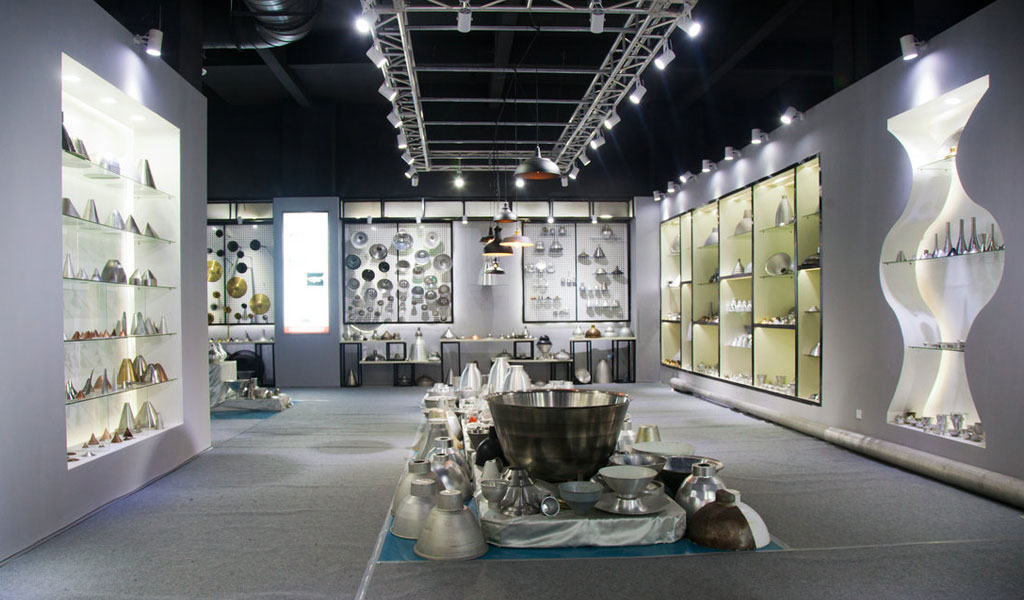
At BE-CU China Metal Spinning company, we make the most of our equipment while monitoring signs of excess wear and stress. In addition, we look into newer, modern equipment and invest in those that can support or increase our manufacturing capabilities. Our team is very mindful of our machines and tools, so we also routinely maintain them to ensure they don’t negatively impact your part’s quality and productivity.
Talk to us today about making a rapid prototype with our CNC metal spinning service. Get a direct quote by chatting with us here or request a free project review.
BE-CU China CNC Metal Spinning service include : CNC Metal Spinning,Metal Spinning Die,Laser Cutting, Tank Heads Spinning,Metal Hemispheres Spinning,Metal Cones Spinning,Metal Dish-Shaped Spinning,Metal Trumpet Spinning,Metal Venturi Spinning,Aluminum Spinning Products,Stainless Steel Spinning Products,Copper Spinning Products,Brass Spinning Products,Steel Spinning Product,Metal Spinnin LED Reflector,Metal Spinning Pressure Vessel,
